Developing the Human Resources Plan
Without the right people available, you might find that the project struggles to stay afloat. Much like assembling a team in sports, building a project team requires that the manager take an overall look at the requirements of the project and then fills the team with people whose skills complement each other perfectly.
It isn't enough to have great people on a team - those people need to make sense with what they bring to the table and what they can contribute toward the overall end goal of the project. This is why a plan to manage the human resource element of the project must be written and fed into the overall project management plan.
 |
The project manager must define the skills and knowledge required for each role within the team and then assigns the appropriate responsibilities to each role to ensure that he or she has a cohesive team. Successful project human resources management will build and maintain a team that can bring the vision to life.
All project team members must have a role and associated responsibilities, and it is the project manager's job to define these roles. This step describes how the project manager will staff, manage, team build, assess and improve the project team. Therefore this process is executed early within the project and is performed iteratively and interactively with other aspects of planning such as time, cost and scope.
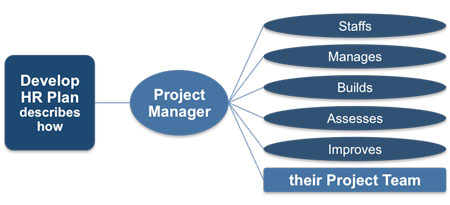 |
The project Human Resources (HR) management plan details the roles, responsibilities, required skills and reporting relationships required for project success. It includes project organization charts and the timetable for staff acquisition and release, and may also include identification of training needs, team-building strategies, recognition programs, compliance considerations and safety issues.
A necessary prerequisite for developing this plan is a detailed description of the activities required by the project and the skills required to complete them. The plan will need to take into account the availability of, or competition for, scarce or limited human resources because other projects or departments may be competing for resources with the same competencies or skill sets.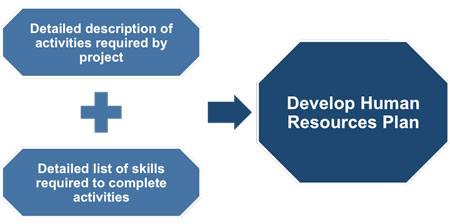 |
A project manager will often be managing his or her project in a matrix environment, which demands a clear strategy and plan for managing project communications between all relevant parties. Individuals and their usual line-managers need to be reassured that their performance and development is recognized within this dual-reporting relationship.
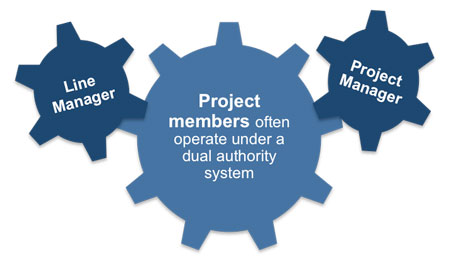 |
An essential prerequisite in these circumstances is the support and buy-in of senior executives, without this, procedures will be constantly challenged within the organization as self-interests are given priority over those of the project. A project manger will need to invest considerable time in networking between all the different parties connected to the project. This is how he or she will gain the understanding and be able to show their empathy with each person's personality, professionalism, competency, and perhaps most importantly their 'interest' in the project.
Networking is best done informally, for example by taking someone for lunch or simply chatting over a coffee. It can be tempting not to bother with this because it can seem less important than producing charts and all of the other more tangible outputs of the project management process.
This is invariably a big mistake to make, because people deliver a project, so being able to understanding their interest and motivation is critical to your success. By committing sufficient time to produce an HR plan, and its associated management plans of communications and stakeholder, will minimize conflict and get things done.
An essential section of your HR management plan must be the documenting team member roles and their associated responsibilities. There are several methods that can be utilized, the objective is to ensure that each work package has an unambiguous owner and that everyone involved in the project has a clear understanding of their responsibilities.
One of the most useful formats is the responsibility assignment matrix (RAM). This is used to illustrate the connections between work packages or activities and project team members.
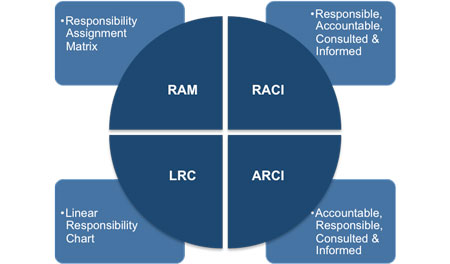 |
One of the most useful formats is the responsibility assignment matrix (RAM). This is used to illustrate the connections between work packages or activities and project team members. Other names for this type of matrix are:
RAM - Responsibility Assignment Matrix
RACI - Responsible, Accountable, Consulted & Informed
ARCI - Accountable, Responsible, Consulted & Informed
LRC - Linear Responsibility Chart
These can be developed at various levels, for example a high-level RAM can define which particular team is responsible each component of the work breakdown structure. This can then be decomposed within the group to designate roles, responsibilities, and levels of authority for specific activities. The benefit of the matrix format is that it shows all of the activities associated with each team member and all team members associated with each activity. This also ensures that there is only one person accountable for any one task to avoid confusion.
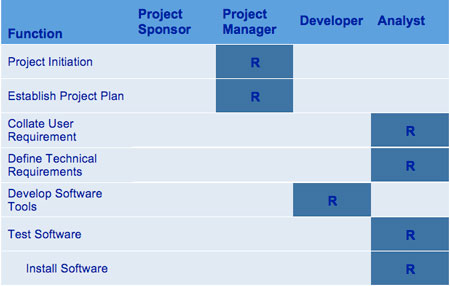 |
At it's simplest the RAM diagram can indicate who is responsible for what (as above), or it can be produced in a format referred to as RACI as shown below.
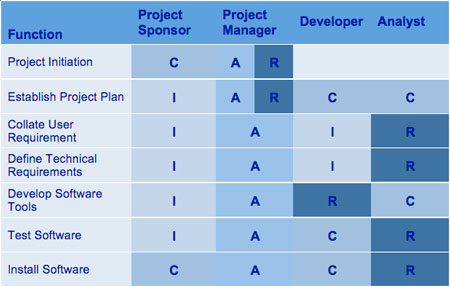 |
These designations are used to indicate who in the team has which specific function for each deliverable.
R - Responsible for doing the work
A - Accountable for the work being done
C - Must be consulted for input
I - Must be kept informed of progress and results
This example chart shows the work to be done in the left column as activities with the assigned resources along the top. The RACI is useful when the team consists of internal and external resources to ensure clear divisions of roles and expectations.
Traditional organization charts like the one shown below can be used to show positions and relationships in a graphical, top-down format.
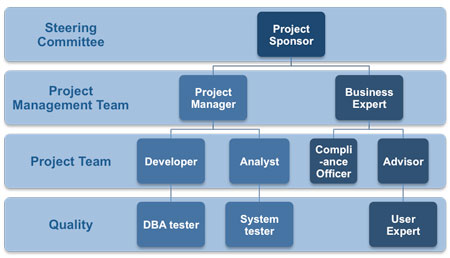 |
It is usually a good idea to draw up an organizational break down structure (OBS) and a chart specifically for each individual project and to show only those departments and functions that are relevant. This will help to make responsibilities and reporting structures clear to everyone involved. This is particularly important for outside contractors who may have no previous experience of dealing with the organization.
A project organization diagram should clearly show the reporting structure for the project with as many levels as needed to express the project organization clearly. At the very least it needs to show whom the project manager reports to and who reports to the project manager for their respective project activities.
Detailed descriptions of team member responsibilities should be specified in position descriptions and role-responsibility-authority forms. These documents detail responsibilities, authority, competencies, and qualifications and can be used as templates for future projects, especially when the information is updated throughout the current project by applying lessons learned. Some responsibilities are usually detailed in the relevant sections of the project plan. For example,
• Risk register lists risk owners,
• Quality plan designates those responsible for carrying out quality assurance and quality control activities.
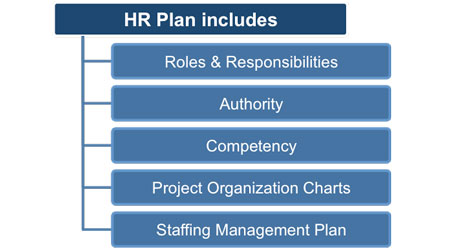 |
The HR management plan provides guidance on how project human resources should be defined, staffed, managed, controlled, and eventually released. The structure of this important document consists of:
Role - Describes the portion of a project for which a person is accountable as well as their authority, responsibilities, and boundaries. Examples include: engineer, business analyst, expert user, etc. It also describes their knowledge, skills and level of competency needed in order to carry out their role within this project.
Responsibility - Describes the work that a project team member is expected to perform in order to complete the project's activities.
Authority - Levels of authority should match role responsibilities and include the right to assign project resources, make decisions, and sign approvals.
Competency - Describes the skills required to complete specific activities.
Project Organization Charts - This is a graphic display of project team members and their reporting relationships.
Staffing Management Plan - This is a part of the human resources plan within the project plan and describes when and how human resource requirements will be met. It includes:
• The staff acquisition processes
• A timetable for staffing requirements
• A description of how and when staff will be released from the project
• Staff training and development needs
• Health and safety policies
The HR management plan can be formal or informal, highly detailed or broadly framed, depending upon the needs of the project. The plan is updated continually during the project to direct ongoing team member acquisition and development actions.
You may also be interested in:
Managing a Project Team | Developing the Project HR Plan | Building an Effective Project Team | Developing the Project Team | Dealing with Conflict in the Project Team | Planning Project Communications | Optimizing Project Communications | Managing Project Communications | Identifying Project Stakeholders | Keeping Project Stakeholders Informed.
|
|


